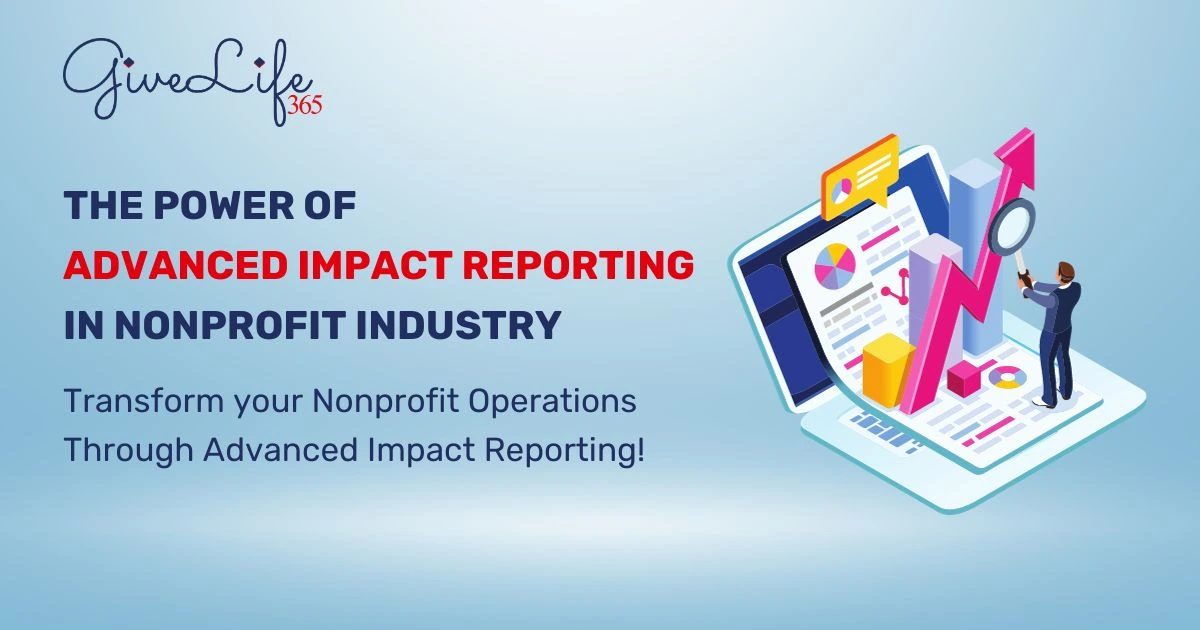

In the world of nonprofits, impact reporting is a big deal. It's changing how they work and how they measure success. Thanks to advancing technology, nonprofits can use advanced tools for impact reporting, making their work more efficient and creating bigger changes in society.
Understanding Impact Reporting: A Paradigm Shift
Impact reporting encompasses the systematic measurement and analysis of the outcomes and effects generated by a nonprofit's activities. Traditionally, nonprofits have focused on outputs like the number of beneficiaries or funds raised. However, advanced impact reporting delves deeper, emphasizing the qualitative and quantitative assessment of the actual societal, environmental, and economic changes brought about by the organization's efforts.
Key Benefits of Advanced Impact Reporting:
- Transparency and Accountability: Robust impact reporting promotes transparency, allowing stakeholders to comprehend the actual impact of their investments or contributions. It builds trust and credibility, crucial for donor retention and attracting new supporters.
- Data-Driven Decision Making: By collecting and analyzing comprehensive data, nonprofits gain insights for informed decision-making. This enables them to optimize strategies, allocate resources more effectively, and align initiatives with real societal needs.
- Enhanced Communication and Engagement: Impact reports become powerful storytelling tools, showcasing success stories, milestones achieved, and challenges overcome. Engaging narratives attract more supporters, fostering a stronger sense of community around the cause.
The Evolution of Impact Reporting Tools
Technological advancements have revolutionized impact reporting, empowering nonprofits with sophisticated tools and software tailored to their specific needs. From basic spreadsheets to dedicated impact measurement platforms, these tools automate data collection, analysis, and visualization.
Advanced Tools Revolutionizing Impact Reporting:
- Impact Measurement Software: Platforms like [LongTail Keyword Tool] offer comprehensive features, allowing nonprofits to track, measure, and report their impact across various programs and initiatives. These tools often come with customizable dashboards and reporting templates.
- Blockchain for Transparency: Integrating blockchain technology ensures unparalleled transparency and immutability of data, assuring stakeholders of the accuracy and authenticity of reported impact metrics.
- AI-Powered Analytics: Artificial intelligence algorithms analyze large datasets swiftly, extracting valuable insights that guide strategic decision-making and future planning.
Driving Efficiency and Effectiveness
Advanced impact reporting doesn't merely measure impact; it drives operational efficiency and effectiveness within nonprofits.
How Impact Reporting Enhances Operational Excellence:
- Resource Allocation Optimization: Detailed impact reports provide visibility into the effectiveness of different programs, guiding resource allocation for maximum impact.
- Real-Time Monitoring and Evaluation: With real-time data collection and analysis, nonprofits can monitor progress continuously, enabling quick adjustments and course corrections.
- Stakeholder Engagement Improvement: Impact reports serve as compelling communication tools, engaging stakeholders, including donors, volunteers, and beneficiaries, fostering stronger relationships and support.
Measuring Success: Metrics That Matter
Quantifying impact requires defining and tracking meaningful metrics aligned with the organization's mission and goals. While outputs like the number of beneficiaries served are essential, focusing on outcomes and broader societal changes is crucial for a holistic evaluation.
Key Metrics for Impact Measurement:
- Social Return on Investment (SROI): Evaluates the social, environmental, and economic value generated per unit of investment, providing a comprehensive understanding of the organization's efficiency and impact.
- Quality of Life Indicators: Measures improvements in the quality of life experienced by receivers, involving health, education, income levels, and overall well-being.
- Long-Term Impact Assessments: Tracks sustained changes over time, revealing the lasting effects of the organization's interventions beyond immediate outcomes.
The Future of Impact Reporting: Continuous Innovation
As technology advances, the future of impact reporting in nonprofits looks promising. Predictive analytics, machine learning, and enhanced integration capabilities will further refine the accuracy and depth of impact measurement.
Upcoming Trends in Impact Reporting:
- Predictive Impact Modelling: Using historical data and machine learning algorithms to predict future impact scenarios, enabling proactive decision-making.
- Integration with ESG Standards: Aligning impact reporting with Environmental, Social, and Governance (ESG) standards to showcase holistic organizational sustainability.
- Mobile-Enabled Reporting: Leveraging mobile technology for real-time data collection, enabling more immediate and accurate impact measurement, especially in remote areas.
Conclusion
Advanced impact reporting is vital for nonprofit growth. When nonprofit leaders adopt these tools, it enhances transparency, accountability, and operational effectiveness, driving significant and lasting social changes.
In a time where impact is as important as intent, using advanced impact reporting is more than an option—it's a must for nonprofits dedicated to creating big changes.
